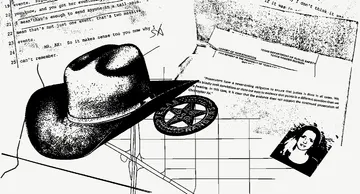Our two news organizations, ProPublica and The Marshall Project, recently teamed up on an investigative story, “An Unbelievable Story of Rape.” It told the tale of a serial rapist and a young woman convicted of lying about what turned out to be a very real, harrowing assault.
Such collaborations are increasingly common in the economically devastated landscape of 21st century journalism. But this one had some unique aspects.
Typically, such arrangements are negotiated at the outset. Our organizations have worked with dozens of partners in every manner of media, from The New York Times to Frontline to NPR to local newspapers across the country.
This collaboration arose entirely by chance, months after both news organizations had begun work on different facets of what turned out to be the same story. The collision of two gifted reporters could just as easily turned into the sort of hell-for-leather foot race that often results when two news organizations discover they are exploring the same landscape.
T. Christian Miller, a senior reporter for ProPublica, was reporting on the failure of law enforcement agencies to track rapists across differing jurisdictions. Ken Armstrong of the Marshall Project had spent more than a year tracking a story of a Washington woman attacked at knifepoint and mistreated by local authorities.
Miller had begun the year by examining missteps in the pursuit of Darren Sharper, a former NFL player who raped nine women in four states. He followed up with a close look at the FBI database that’s supposed to help identify serial killers and rapists, but goes largely unused because few local police departments bother to upload reports about sexual assaults.
In August, Miller was reporting what he felt was the most powerful story of the series: The tale of a serial rapist in Colorado who was stopped through the smart detective work of several local police departments working together. At one point, Miller heard that the rapist had actually begun his string of violent assaults years before in Washington State. An 18-year-old woman reported being raped in her apartment.
Under intense interrogation by police who doubted her story, she said she had made it up. The police chose to teach her a lesson about making false claims, threatening her with a year behind bars. She eventually agreed to a plea deal that spared her jail time but imposed a range of humiliating conditions, including undergoing counseling for her lying. Years later, with the rapist about to be sentenced to more than 300 years in prison, the woman was vindicated.
It was an amazing story. But when Miller called the woman’s lawyer, he heard the words that make journalists’ blood run cold: “I don’t know why you are bothering with this. I’m already in contact with another reporter, a guy named Ken Armstrong.”
Decades ago, there would have been little discussion about what to do next. Rush back to the office. Bang out the story as fast as possible. Beat the other guy before he could beat you.
It’s an approach the chief editors of The Marshall Project and ProPublica know well. We first became friends while working as competitors at the Washington bureaus of The Dallas Morning News and Dallas Times Herald, two organizations embroiled in what turned out to be one of the nation’s last newspaper wars. Cutthroat competition was a given in that fight, as ubiquitous as classified ads and home delivery. All a Morning News reporter needed to take an exotic trip was say the magic words: “I hear the Herald might be on to this one.’’
Competition did have some benefits for readers. Reporters needed to be vigorous about following leads and avoiding complacency. Later, when we were both Washington-based reporters for The New York Times, we felt a burst of adrenaline any time the phone rang around 10:30 p.m. (the time the next day’s Washington Post hit the streets) and some editor would begin a sentence with the dreaded “There’s a story on the front page that says….’’
Of course, such intense competition did not always make for the best journalism. Rushing to beat competitors sometimes meant you’d be bashing out a story without enough time to for fact-checking, careful writing or critical thinking.
When Miller told Joe Sexton, his editor at ProPublica, that Ken Armstrong had been on the story for many months, there was a moment, maybe several moments, when the old instincts kicked in and both news organizations considered rushing ahead with what they had. Or, as Sexton so delicately put it: “Let’s be the first to destroy the other guy.’’
In the end, however, we decided that we could put aside our competitive instincts and try to do justice to a story that all agreed was remarkable for its power and emotional poignancy. Being first wasn’t as vital as treating the story – and the woman at the awful center of it – with the respect and resources they deserved. It helped that we had all worked closely together as editors at the New York Times. There was also logic in combining forces on a story that involved multiple characters and jurisdictions.
Not every reporter works well with a collaborator and T. Christian Miller and Ken Armstrong are both seasoned veterans with distinct writing styles. But they bonded over the intrinsic import of this story and ultimately interviewed the woman, identified in the story as Marie, the cop who botched her case, the detectives who cracked it, and, in prison, the serial rapist.
Our two organizations are dedicated to the idea that journalistic success is about more than advertising revenue and page views. The Marshall Project and ProPublica will be philanthropic ventures for the foreseeable future, measuring our worth in the difference we make, not the dollars we earn. As nonprofits, we have a special responsibility to get the public the stories that they need.
We hope that our decision in this instance to work together had benefits for Marie, for other women, for law enforcement.
